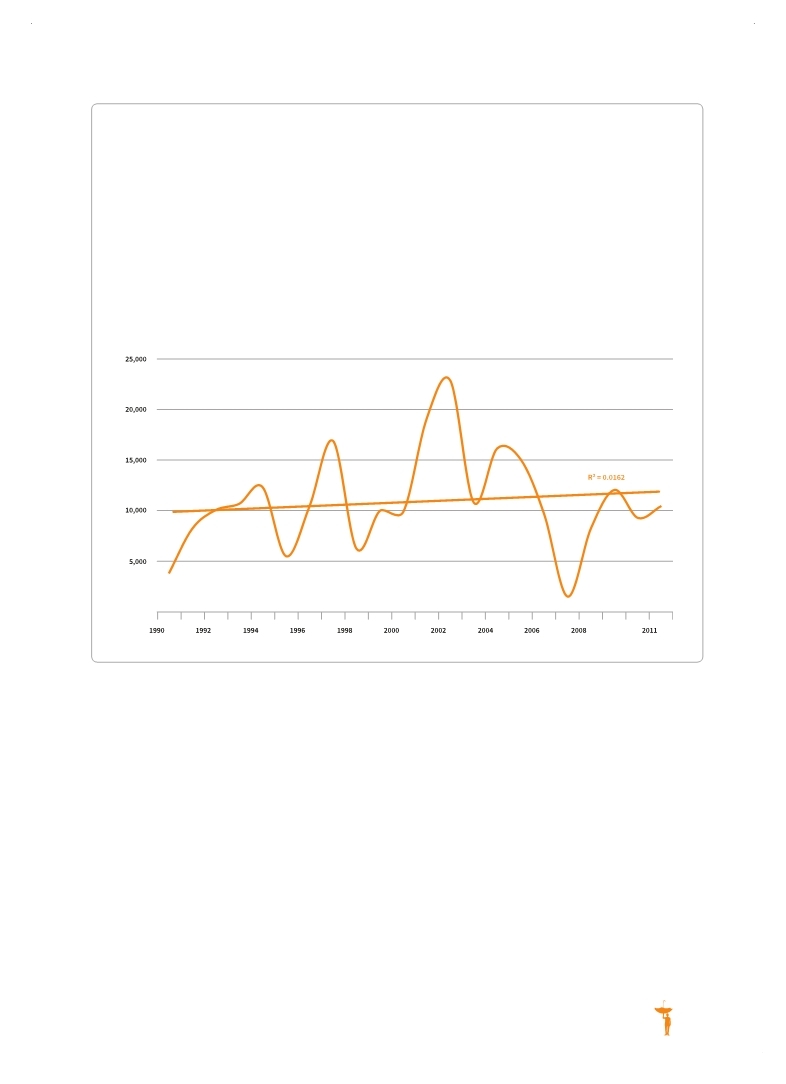 |
Global Assessment Report on Disaster Risk Reduction 2015
Making development sustainable: The future of disaster risk management |
 |
Global Assessment Report on Disaster Risk Reduction 2015
Making development sustainable: The future of disaster risk management |
|
|

151
provides clear incentives to manage risks and to ensure compliance.
The current understanding of the different groups with vested interests in the outcomes of risk management is far too broad. For example, private investment and the private sector encompass small and medium enterprises, farmers, informal traders and labourers, households and individuals, national businesses and large international corporations, investment banks and asset managers, insurers and a vast range of service providers to all of these groups.
Box 7.11 Something’s burning
Figure 7.7 Number of houses damaged and destroyed in Tamil Nadu and Odisha, 1990-2013
(Source: UNISDR with national loss data.)
Catastrophic urban fires devastated Rome in 64 CE, London in 1666, Chicago in 1871, and Boston in 1872; the 1906 San Francisco fire destroyed nearly 95 per cent of the city, and the Tokyo fire of 1923 killed over 40,000 people. The implementation of modern building codes, land-use planning, the establishment and expansion of emergency services, greater citizen responsibility, and insurance regulations have largely consigned the catastrophic urban fire to history. From the perspective of intensive risk, the problem has been solved (
 GFDRR, 2014a GFDRR, 2014a GFDRR (Global Facility for Disaster Reduction and Recovery). 2014a,Understanding Risk: The Evolution of Disaster Risk Assessment since 2005, Background Paper prepared for the 2015 Global Assessment Report on Disaster Risk Reduction. Geneva, Switzerland: UNISDR.. GFDRR (Global Facility for Disaster Reduction and Recovery). 2014a,Understanding Risk: The Evolution of Disaster Risk Assessment since 2005, Background Paper prepared for the 2015 Global Assessment Report on Disaster Risk Reduction. Geneva, Switzerland: UNISDR.. Click here to view this GAR paper. National disaster loss data, however, reveals a very different story. The occurrence of fires in urban informal settlements and rural villages is trending up, and housing damage has been increasing since 1990. In Odisha and Tamil Nadu, India, for example, fires have caused 13 per cent of all housing damage since 1990 and are on the rise (Figure 7.7). For risk information to play such a role, it needs to be located inside development and within the social and economic constraints and opportunities that frame risk management. The room full of mirrors needs to open its doors; only then can a real culture of prevention and resilience emerge.
|
 
Page 1Page 10Page 20Page 30Page 40Page 50Page 60Page 70Page 80Page 90Page 100Page 110Page 120Page 130Page 140Page 141Page 142Page 143Page 144Page 145Page 146Page 147Page 148Page 149Page 150Page 151Page 152->Page 153Page 154Page 155Page 156Page 157Page 158Page 159Page 160Page 161Page 162Page 163Page 164Page 165Page 170Page 180Page 190Page 200Page 210Page 220Page 230Page 240Page 250Page 260Page 270Page 280Page 290Page 300Page 310
|
|
 
|
 
|
